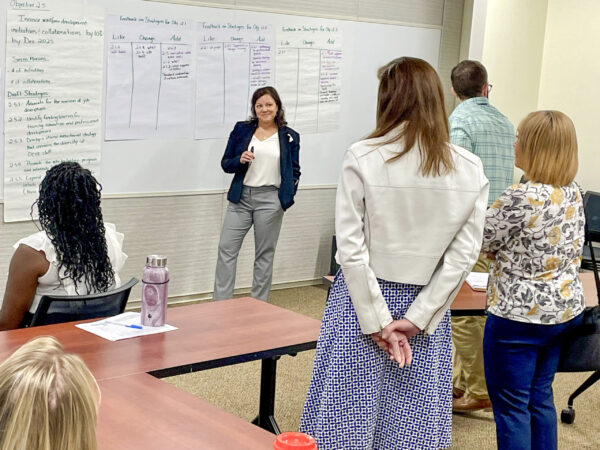Assessment & Planning
HRiA’s tailored, collaborative approach to assessment and planning is grounded in health equity, authentic engagement, and powerful community-informed results. Our clients and communities have the information they need to take action and implement strategy.
Healthy, thriving communities
Our community health assessment and planning process work identifies the strengths and needs of a community. These activities improve the health of residents, inform funding decisions, and prioritize program development areas and implementation strategies.
While we offer many assessment types and plans, our work employs asset-based and community-centered approaches. HRiA provides a comprehensive suite of services that employ current models in the field and meet or exceed compliance requirements. Each project is customized to client and community needs.

Areas of Expertise
Community Health Assessment
Identify and analyze community health needs and assets.
Assessment studies can support regulatory compliance, establish good public health practices, and improve the health of residents. We offer a range of options including Community Health Needs Assessments for accreditation and regulatory requirements, and Health Impact Assessments, which evaluate the potential health effects of a project, policy, or plan on a community. Also, our Topical Assessments examine specific health and/or social conditions in a particular population or geography.
Community Health Improvement
Address policies, systems, and environments to improve health.
We partner with hospitals, health systems, community health centers, health departments and others to meet regulatory requirements (e.g., IRS Form 990, PHAB accreditation, etc.). Our work also includes the development of Community Health Improvement plans to improve the health of surrounding communities.
Racial Equity Assessment
Understanding organizational capacity.
Racial equity assessments provide in-depth information about organizational capacity to advance equity by transforming culture, policies, practices, and systems. We identify key factors that may facilitate or impede the success of equity efforts, including staff knowledge, attitudes, and experiences. Assessment results provide baseline data as a strategy for knowing where to focus and to measure progress on organizational efforts to advance equity.
Formative Research
Developing your initiative.
We refer to activities informing the development of an initiative as formative research. These activities match client needs and goals. They may include environmental scans, landscape analyses, literature reviews, initial key informant interviews, and feasibility studies.
Strategic Planning
We help organizations develop actionable strategic plans to achieve their goals.
Strategic planning enhances organizational excellence. We work with organizations to identify priorities and develop and document goals, objectives, and strategies as part of a strategic plan to invigorate and guide action to achieve your mission. Our strategic planning services are tailored to your needs, efficient, and developed to ensure meaningful participant engagement and stakeholder input on all elements of the plan. If you are not ready for a full strategic planning process, we also facilitate strategic discussions, convene and engage key stakeholders, and/or conduct prioritization processes to help inform future or ongoing planning efforts.
Impact Stories
Read how our assessment and planning work supports community health while influencing strategic plans.

Advancing health equity at the local level

Collaborating on community health improvement
Leadership
Think we can help?
We work with our clients to create custom assessment and planning projects that meet specific organizational and community needs. If you don’t see your exact needs listed in our services and offerings, we’d still love to hear from you.


